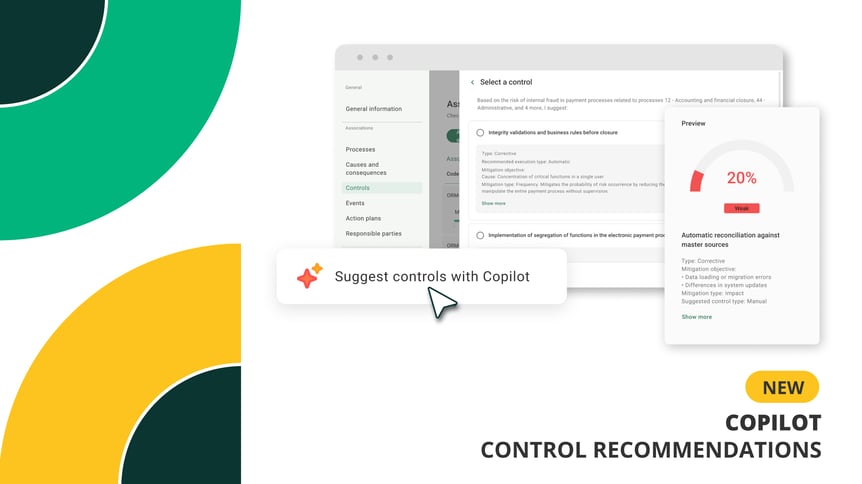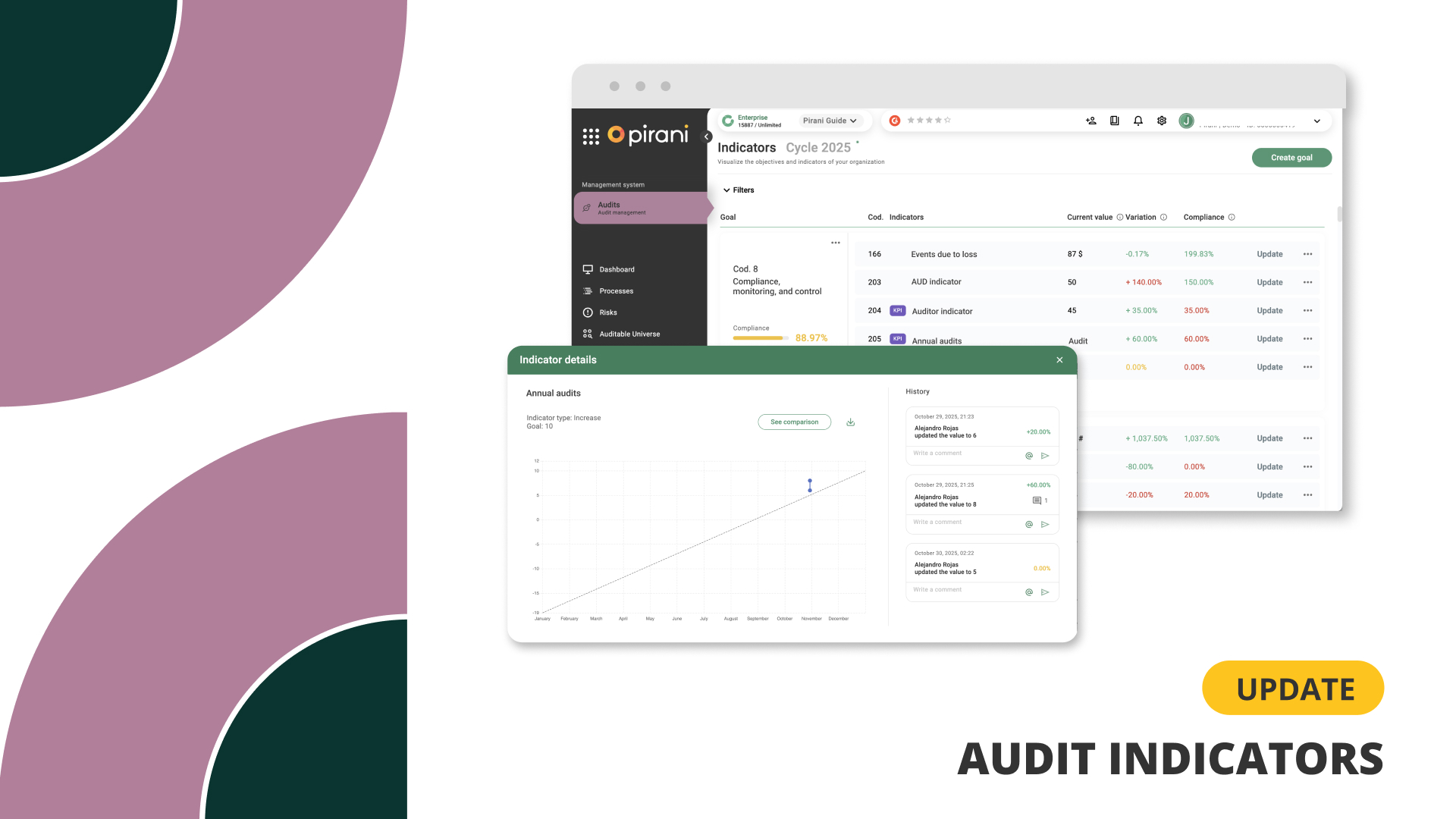How Pirani Copilot automatically creates controls based on risks
Assessing risks and determining appropriate controls can be a complex and demanding process. Now, Pirani Copilot takes risk management a step further: it’s an intelligent assistant that automatically generates controls from registered risks, combining organizational data and specific context to deliver accurate and effective solutions.
This functionality enables risk teams to save time, reduce errors, and ensure that each control is aligned with the organization’s real needs.

|
Tabla de contenido |
What is it and what is it for?
Pirani Copilot is Pirani’s artificial intelligence–powered assistant designed to enhance organizations’ risk management processes.
This functionality allows you to automatically create risks based on your organization’s context — considering factors such as industry, size, and operating environment — and to generate controls from the risks already registered.
Its main goal is to automate risk identification and mitigation, ensuring that both risks and controls are relevant, measurable, and aligned with best risk management practices.
Copilot is integrated into Pirani’s Risk module, making it easier for users to directly associate risks and controls without the need to manually build each mitigation action.
Benefits and advantages for the organization
Implementing Copilot’s automatic control generation feature brings multiple benefits:
- Complete automation: Controls are created directly from risks, reducing manual effort.
- Contextual accuracy: Each generated control takes into account the organization’s industry, size, and specific characteristics.
- Time and resource savings: The risk mitigation process is streamlined without compromising management quality.
- Data-driven decisions: Provides evaluations and design ratings for controls based on objective data.
What problems does it help solve?
Traditional risk management often faces several challenges:
- Generic or irrelevant controls.
- Subjective evaluations and lack of consistency.
- Slow, manual processes to associate risks and controls.
- Difficulty maintaining traceability and keeping controls up to date.
With Copilot, these problems are significantly reduced thanks to its ability to automatically generate controls based on each risk’s context and the organization’s specific characteristics.
How does it work?
The process of automatically generating controls is simple and seamless:
- Go to the Risk module and select the risk you want to mitigate.
- In the Associated Controls section, click:
Associate → Suggest controls with Copilot - Copilot analyzes the risk and automatically generates a list of controls, including detailed information such as name, description, type, and responsible party.
- For more accurate recommendations, expand your organization’s context by adding:
- Critical processes
- Internal policies
- Regulatory environment
- Critical processes
This allows Copilot to generate controls that are even more closely aligned with your specific needs.
How to Create and Evaluate a Control
Once Copilot generates the controls, the validation and creation process is as follows:
- Select the control that best fits the risk. (Only one control can be selected per risk.)
- Click Evaluate Control. Copilot will display a proposed control design rating based on:
- The risk context
- Its causes and consequences
- The risk context
- Adjust the rating according to your professional judgment.
- Click Create.
The control will be automatically configured and associated, ready for monitoring and follow-up.
Important: Keep your organization’s information and registered risks up to date. The more complete the context, the more accurate the controls generated by Copilot will be.
Practical use cases
- Financial sector companies: Automatically generate controls for regulatory and operational risks, reducing human error.
- Industrial organizations: Mitigate critical production risks with precise controls generated directly from each risk.
- Internal audit departments: Evaluate automatically suggested controls more efficiently and implement data-driven improvements.
In all cases, the automatic control generation feature enables organizations to act faster, reduce risks, and improve traceability in their risk management processes.
Conclusion
The new functionality of Pirani Copilot represents a significant advancement in risk management.
It’s no longer just about suggesting controls — now it can generate them automatically, based on specific risks and organizational context.
This innovation ensures greater efficiency, precision, and strategic management, taking organizations to a higher level of control and risk mitigation.
Are you already using Copilot to create controls for your risks?
Discover here how to create indicators in our Help Center modules.
Try it now!
Don’t have the Starter plan yet? Schedule a demo with our Sales team!
You May Also Like
These Related Stories

Audit Indicators: Measure and Strengthen Control Management

Complete Guide: How to Successfully Manage Operational Risk

How to make a risk matrix for your company

How many controls does ISO 27001 have?

Unraveling Information Security Management Complexities


No Comments Yet
Let us know what you think